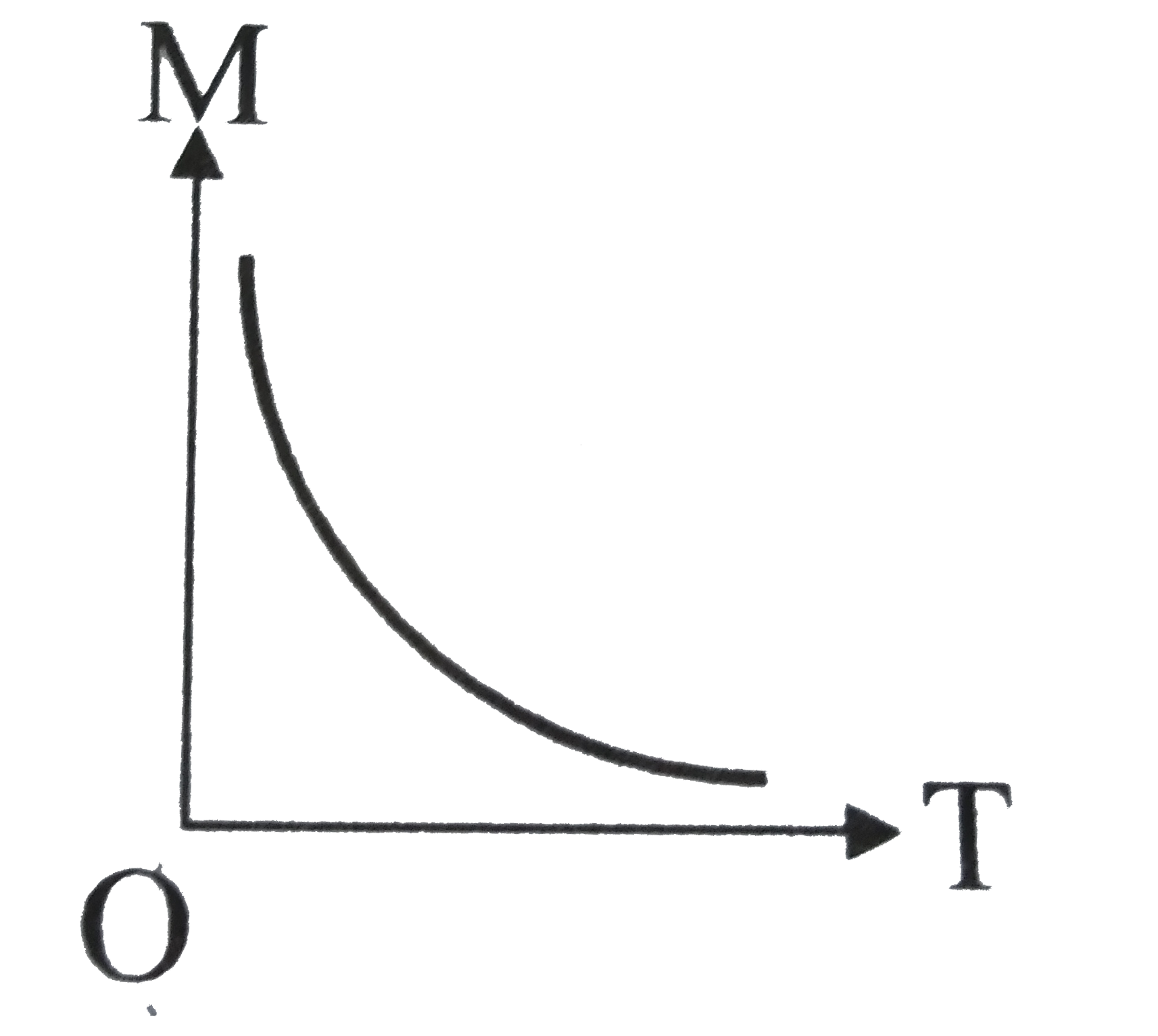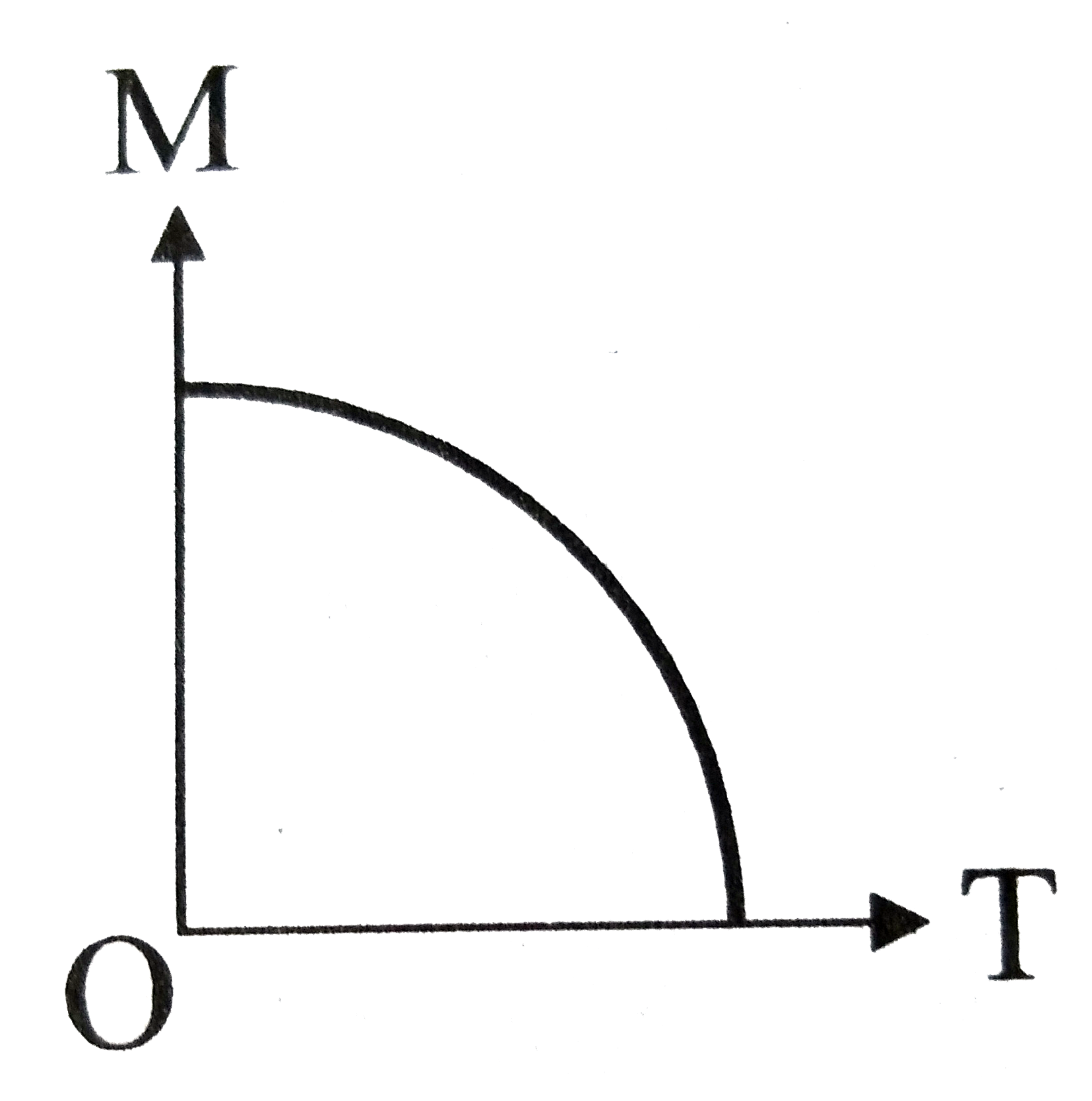Explain qualitatively on the basis of a domain picture the irreversibility in the magnetization curve of a ferromagnet.
To explain the irreversibility in the magnetization curve of a ferromagnet based on the domain picture, we can break down the explanation into several steps:
1. Understanding Ferromagnetism:
- Ferromagnetic materials consist of small regions called domains, each of which has a net magnetic moment due to the alignment of atomic magnetic moments within that domain. In the absence of an external magnetic field, these domains are randomly oriented, resulting in no net magnetization.
Hint: Recall that domains are small regions where magnetic moments are aligned.
2. Applying an External Magnetic Field:
- When an external magnetic field (H) is applied, the domains that are aligned with the field grow at the expense of those that are not. This leads to an increase in the overall magnetization (I) of the material. The domains begin to align in the direction of the applied field.
Hint: Think about how the external field influences the orientation of the domains.
3. Saturation Magnetization:
- As the external magnetic field strength increases, the material reaches a point of saturation where nearly all domains are aligned with the field. At this point, the magnetization reaches its maximum value.
Hint: Remember that saturation occurs when almost all domains are aligned.
4. Reducing the Magnetic Field:
- When the external magnetic field is gradually reduced, the magnetization does not return to zero. Some domains revert to their original random orientations, but many remain aligned due to the energy barrier that prevents them from returning to their initial state.
Hint: Consider why some domains resist returning to their original state.
5. Hysteresis Loop:
- The result of this behavior is a hysteresis loop in the magnetization curve. The path of magnetization during the application of the field differs from the path during demagnetization. This loop indicates that the magnetization is not fully reversible, leading to residual magnetization even when the external field is zero.
Hint: Visualize the loop formed in the magnetization curve.
6. Irreversibility Explained:
- The irreversibility in the magnetization curve can be attributed to the fact that once some domains have aligned, they require a significant amount of energy to realign back to their original state. This energy barrier leads to a permanent change in the magnetization state of the material.
Hint: Think about energy barriers and how they affect domain movement.
Conclusion:
The irreversibility in the magnetization curve of a ferromagnet is a result of the domain structure and the energy barriers that prevent some domains from returning to their original orientations after the external magnetic field is removed. This leads to a residual magnetization, which is a characteristic feature of ferromagnetic materials.
- Ferromagnetic materials consist of small regions called domains, each of which has a net magnetic moment due to the alignment of atomic magnetic moments within that domain. In the absence of an external magnetic field, these domains are randomly oriented, resulting in no net magnetization.
- When an external magnetic field (H) is applied, the domains that are aligned with the field grow at the expense of those that are not. This leads to an increase in the overall magnetization (I) of the material. The domains begin to align in the direction of the applied field.
- As the external magnetic field strength increases, the material reaches a point of saturation where nearly all domains are aligned with the field. At this point, the magnetization reaches its maximum value.
- When the external magnetic field is gradually reduced, the magnetization does not return to zero. Some domains revert to their original random orientations, but many remain aligned due to the energy barrier that prevents them from returning to their initial state.
- The result of this behavior is a hysteresis loop in the magnetization curve. The path of magnetization during the application of the field differs from the path during demagnetization. This loop indicates that the magnetization is not fully reversible, leading to residual magnetization even when the external field is zero.
- The irreversibility in the magnetization curve can be attributed to the fact that once some domains have aligned, they require a significant amount of energy to realign back to their original state. This energy barrier leads to a permanent change in the magnetization state of the material.
The irreversibility in the magnetization curve of a ferromagnet is a result of the domain structure and the energy barriers that prevent some domains from returning to their original orientations after the external magnetic field is removed. This leads to a residual magnetization, which is a characteristic feature of ferromagnetic materials.
Topper's Solved these Questions
- MAGNETISM AND MATTERBOOK - MODERN PUBLICATIONCHAPTER - MAGNETISM AND MATTEREXERCISE - HIGHER ORDER THINKING KILLS AND ADVANCED LEVEL
8 Videos
- MAGNETISM AND MATTERBOOK - MODERN PUBLICATIONCHAPTER - MAGNETISM AND MATTEREXERCISE - REVISION EXERCISE (VERY SHORT ANSWER QUESTION)
65 Videos
- MAGNETISM AND MATTERBOOK - MODERN PUBLICATIONCHAPTER - MAGNETISM AND MATTEREXERCISE - NCERT FILE (NCERT TEXTBOOK EXERCISE)
26 Videos
- ELECTROSTATIC POTENTIAL AND CAPACITANCE BOOK - MODERN PUBLICATIONCHAPTER - ELECTROSTATIC POTENTIAL AND CAPACITANCE EXERCISE - Chapter Practice Test
9 Videos
- MOVING CHARGES AND MAGNETISMBOOK - MODERN PUBLICATIONCHAPTER - MOVING CHARGES AND MAGNETISMEXERCISE - CHAPTER PRACTICE TEST
13 Videos
Similar Questions
Explain qualitatively on the basis of domain picture the irreversibility in the magnetisation curve of a ferromagnet.
View SolutionAnswer the following question: (a) Explain qualitatively on the basis of domain picture, the irreversibility in the magnetisation curve of a ferromagnet.
(b) The hysteresis loop of a soft iron piece has a much smaller area than that of a carbon steel piece. If the material is to go through repeated cycles of magnetisation, which piece will dissipate greater heat energy?
(c) A system displaying a hysteresis loop such as ferromagnet is a device for strong memory? Explain the meaning of this statement.
(d) What kind of ferromagnet material is used for coating magnetic tapes in a cassette player, or for building memory stores in a modern computer?
(e) A certain region of space is to be shielded from magnetic fields. Suggest a method.
View Solution
Knowledge Check
Morgan explained linkage on the basis of
Aautosomal monohybrid cross in DrosophilaBautosomal dihybrid cross in NeurosporaCautosomal dihybrid cross in fruit flyDautosomal test cross in Lathyrus odoratusLenz' law is explained on the basis of
Ainertia of restBinertia of motionCmoment of inertiaDelectromagnetic inertiaA curve between saturation magnetization and temperature of a ferromagnetic sample is
A B
B C
C D
D
Explain qualitatively on the basis of a domain picture the irreversibility in the magnetization curve of a ferromagnet.
View SolutionExplain ferromagnetism.
View SolutionExplain the following terms with suitable examples :
(i) Schottky defect
(ii) Ferromagnetism.
View SolutionExplain classification of polymers on the basis of origin.
View SolutionWould the maximum possible magnetization of a paramagnetic sample be of the same order of magnitude as the magnetization of a ferromagnet?
View Solution
